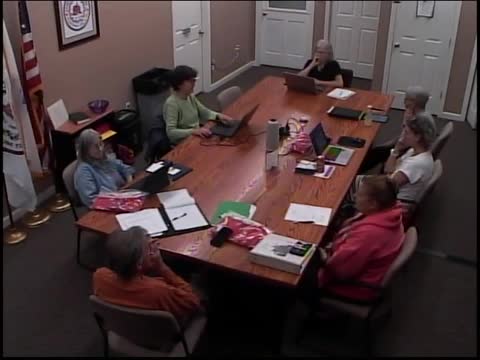Library Renovation Plans Spark Intense Community Debate
September 05, 2024 | Town of Hubbardston, Worcester County, Massachusetts
This article was created by AI summarizing key points discussed. AI makes mistakes, so for full details and context, please refer to the video of the full meeting. Please report any errors so we can fix them. Report an error »

During a recent government meeting, discussions centered on potential funding avenues for library improvements, particularly focusing on grant opportunities and the implications of renovation projects. Wendy Frontier presented a list of potential grants, emphasizing the need for a comprehensive approach to library renovations, which must encompass the entire building to qualify for certain funding.
The conversation highlighted the complexities of navigating grant applications, particularly the Massachusetts Public Library Construction Program (MPLCP), which mandates that renovations exceeding 30% of a building's assessed value must bring the entire structure up to code. This requirement poses significant financial challenges, especially for older libraries like Carnegie libraries, which often lack the necessary funds for extensive upgrades.
Participants debated the merits of seeking funding through the Capital Improvement Planning Committee (CIPC) versus the Community Preservation Committee (CPC). Some members expressed a preference for the CPC, arguing that it aligns better with the library's broader goals. The CPC's funding is derived from a tax on real estate transactions, allowing for expenditures in areas such as recreation and historical preservation.
The group also discussed the importance of consulting with experts to maximize grant opportunities. They considered hiring a consultant to assist in identifying and applying for grants, with estimates for such services ranging from $6,000 to $10,000. The need for collaboration with other town organizations was emphasized, as was the importance of gathering community feedback to inform future library projects.
In addition to funding discussions, the meeting touched on the upcoming \"Red Race,\" a community event aimed at raising funds for the library. Organizers anticipated a good turnout, with projections of earning between $2,500 and $3,000 from the event.
Overall, the meeting underscored the library's commitment to enhancing its facilities while navigating the complexities of funding and community engagement. The next steps involve reaching out to relevant committees and experts to solidify plans for future improvements.
The conversation highlighted the complexities of navigating grant applications, particularly the Massachusetts Public Library Construction Program (MPLCP), which mandates that renovations exceeding 30% of a building's assessed value must bring the entire structure up to code. This requirement poses significant financial challenges, especially for older libraries like Carnegie libraries, which often lack the necessary funds for extensive upgrades.
Participants debated the merits of seeking funding through the Capital Improvement Planning Committee (CIPC) versus the Community Preservation Committee (CPC). Some members expressed a preference for the CPC, arguing that it aligns better with the library's broader goals. The CPC's funding is derived from a tax on real estate transactions, allowing for expenditures in areas such as recreation and historical preservation.
The group also discussed the importance of consulting with experts to maximize grant opportunities. They considered hiring a consultant to assist in identifying and applying for grants, with estimates for such services ranging from $6,000 to $10,000. The need for collaboration with other town organizations was emphasized, as was the importance of gathering community feedback to inform future library projects.
In addition to funding discussions, the meeting touched on the upcoming \"Red Race,\" a community event aimed at raising funds for the library. Organizers anticipated a good turnout, with projections of earning between $2,500 and $3,000 from the event.
Overall, the meeting underscored the library's commitment to enhancing its facilities while navigating the complexities of funding and community engagement. The next steps involve reaching out to relevant committees and experts to solidify plans for future improvements.
View full meeting
This article is based on a recent meeting—watch the full video and explore the complete transcript for deeper insights into the discussion.
View full meeting
